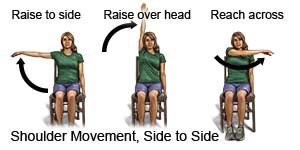
Physiotherapy (Passive Physiotherapy e.g. For passive treatment, think of lying down for a massage, or receiving needles in acupuncture. Note that some categories of passive treatment have active components, if your chiropractor assigns exercises for example.

In general, if you are lying down, seated, or simply not moving very much, you are most likely receiving passive therapy. For these therapies there is an obvious distinction between active and passive: you are exerting force and/or moving, or you are receiving the therapy without your own effort. In the broadest sense passive therapy also includes medicine. Passive treatments include common physiotherapy, chiropractic, and RMT techniques. There’s nothing wrong with passive therapy, and in fact it is core to most health and rehabilitation plans. I’ll start this by saying passive therapy as a management or intervention is the norm. To find out what therapy is best for you, let's take a closer look at passive and active physical therapies. That sounds simple, but what does an active approach really mean for therapy, what passive therapies am I referring to, and what are the active treatment alternatives?Īctive and passive treatments have their pros and cons, so which is better? The answer isn't clear-cut, but should be based on the level of severity and your goals. Active therapy like kinesiology means you are self-actuating the movement, activating your own muscles to push, pull or move. Passive therapy like massage and most physiotherapy means you are being worked on or manipulated rather than initiating or actively participating in the movement yourself. Instead, passive therapies rely on the therapist to administer all of the necessary care manually. Passive therapy techniques are those that do not require the patient to exert physical effort to participate in treatment.

The terms passive and active apply to all physical therapies, and refers to the state you are in during therapy.


 0 kommentar(er)
0 kommentar(er)
